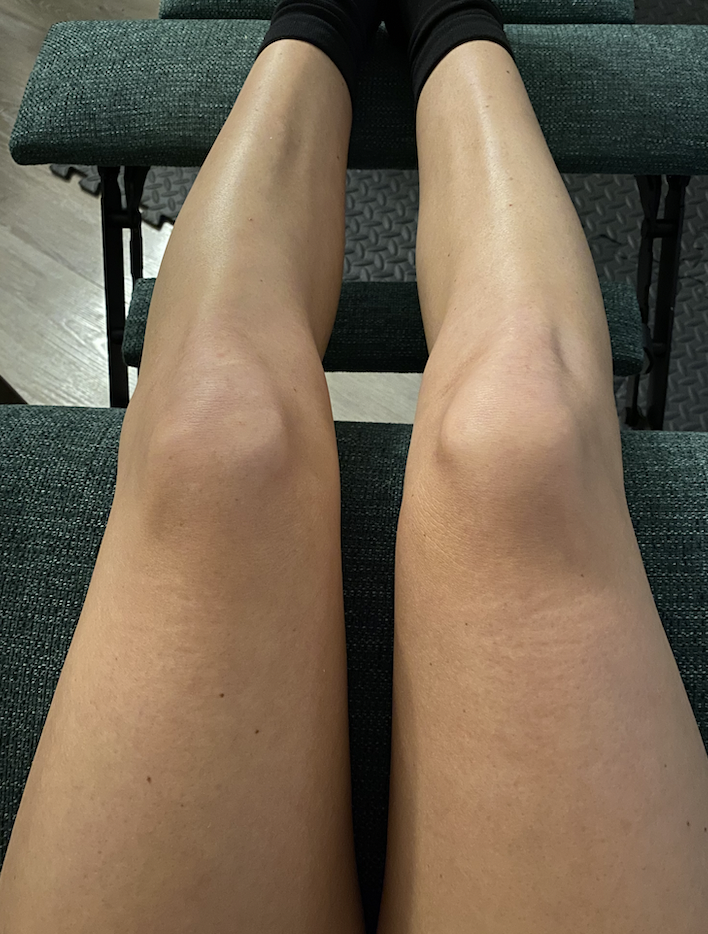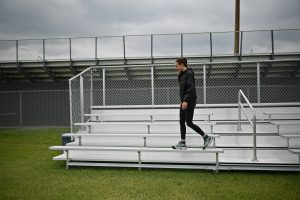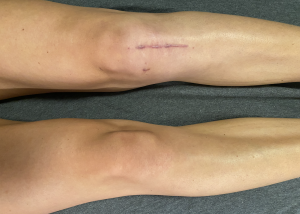Tearing My ACL
This post covers the initial few weeks after tearing my ACL during competitive soccer in August 2021.
As a soccer player and physio, hearing about a torn ACL is a common occurrence. I’ve had multiple teammates and friends go through tears, surgeries and comebacks, as well as being on the field and diagnosing a teammate with a re-rupture of her ACLR.
Everyone’s reactions are always a lot to handle when you are the one who tore your ACL – sympathy, sadness, questions, shock, pity – most people know what the recovery time looks like for ACLs. I’m going to be doing a set of posts regarding my own experience as well as throwing in some research and anecdotal experiences to hopefully give some insight to what the process can look like. Over the past 10 months, since I tore my ACL, I’ve received a million questions, so I hope these posts also answer some of those general questions you may have. This isn’t meant to be medical advice, physio advice, a plan of care, or a history of ACLRs.

A common thought about injuries is that they are painful – this is usually not true in the case of full ligament ruptures. When you completely tear your ACL, you might hear a pop and have an initial bout of pain, but it subsides and you are left without pain. If you do have a very painful knee, it is often associated with the other injured structures during the mechanism of your tear. Personally, I had a bucket handle tear of my lateral meniscus with NO pain, so it is always individualized. There can also be partial tears of the collateral ligaments, often the MCL, or boney involvement.
I knew I tore mine as I did it – likely the experiences I’ve had as a physio, knowing the mechanism of the injury (usually a non-contact plant and twist motion) and having felt what I felt in my knee. If you have torn your ACL and you have had episodes of instability it really just comes down to a ‘yuck’ feeling. My knee felt very unstable and I couldn’t support my weight on it fully without feeling like it was going completely buckle in on me.
The steps I took after tearing my ACL

I booked a sports med doctor appointment ASAP for confirmation, was on crutches while I regained my ability to walk without my knee giving way, and started my prehab. X-rays will clear any boney involvement, or show the extent of boney contusions or small fractures that may have occurred, and an MRI will show you the extent to which the ligaments are injured. I didn’t get an MRI as the public wait is often 7-12 months (here in Alberta, CAN) and my injury was very clear to me and to all health professionals I saw, we weren’t wondering if the ACL was torn, it clearly was.
I received the referral to see a surgeon and made my decision to go down the operative route. Again, because of my experience as a physio, I am more versed in the literature around ACLs than a regular person. There are MANY factors that go into deciding to have surgery or go down the non-operative path. As a bottom line – ACLs CAN heal. You CAN regain function without surgery. My personal decision was based on my continued giving way episodes and feelings of instability that did not resolve with rehab, as well as the major meniscus tear. I also wanted to go back to soccer at a fairly high level and continue playing sport for quite some time. This is a decision to discuss with your physio, your surgeon and an honest conversation with yourself. If you don’t know what questions to be asking – you need to reach out to a physio that understands ACL injuries.
Rehab before surgery
A recommended period of rehab is usually around 3 months pre-op or to see if your knee will cope without an ACL. As I was waiting for surgery, I had 3 months to prehab. I worked myself up from crutches to single leg weighted exercises. I never got back to running or sports as the instability was still quite prominent. With my physio background, I was able to prehab myself but if you do not have this experience, I would recommend seeing someone who can help progressively overload you properly – better prehab usually means better post-op outcomes, OR you might find that your knee is doing great just with the rehab.
Waiting for surgery is a bit of a drag. I began to mentally prepare myself for what was to come and how the next couple years were going to look. I have an amazing support system and knew that I could take time off work, that I would have people to look after me immediately post-op and that I would be able to rehab well afterwards.
You can purchase the ACL Injuries ebook where I talk about my experience, what to expect, graft options, how to find a physio, the mental aspect of the injury, and physical timelines to expect during recovery.
I speak about tearing my ACL on my instagram here:
If you have questions regarding ACLR, I do recommend you speak to your own physio and surgeon as they know your injury. There are a few instagram pages that have great resources for those going through an ACLR which you can find here:


